The Definitive Lacrosse Sock Buying Guide For 2023The Definitive Lacrosse Sock Buying Guide For 2023
Choose Moisture-Wicking Lacrosse Socks For Optimal Performance
When selecting lacrosse socks, moisture-wicking materials like polyester and nylon should be top of mind. The intense running and constant movement in lacrosse leads to copious sweating, especially on hot game days. Cotton socks absorb moisture and stay wet, creating discomfort and blisters. Polyester and nylon lacrosse socks instead wick perspiration away from the skin, keeping feet dry and comfortable. This allows players to maintain focus on the field, rather than being distracted by damp, bunching socks.
Moisture-wicking socks also prevent odor buildup and bacterial growth by remaining relatively dry. Wet cotton socks retain sweat and bacteria, becoming smelly and unsanitary over time. Breathable synthetic lacrosse socks discourage bacterial growth and odors by whisking moisture to the outer layer where it can evaporate. This keeps feet fresh for longer.
Some high-end moisture-wicking lacrosse socks even incorporate anti-microbial treatments into the fabric itself. This provides lasting protection against odors, even after repeat uses and washes. Silver ions bind to bacteria cells, rupturing cell membranes and deactivating the bacteria. This prevents the bacteria from reproducing and spreading foot odor.
When playing intense sports like lacrosse, overheating is also a concern. Heat rash and blisters can quickly take players out of commission. Moisture-wicking socks contain mesh ventilation zones that allow air flow over the feet. This airflow cools the skin and regulates temperature, preventing painful overheating issues.
So when suiting up for game days, practices, and training sessions, reach for moisture-wicking polyester and nylon lacrosse socks. They’ll keep feet dry, cool and odor-free – allowing players to bring their A-game from start to finish. Synthetic lacrosse socks are a small but impactful gear choice that can elevate on-field performance.
Pick Lacrosse Socks with Ankle and Achilles Support

When shopping for lacrosse socks, opt for pairs with ankle and Achilles support built in. The constant starting, stopping, cutting, and pivoting involved in lacrosse places intense strain on ankles and the Achilles tendon. Choosing socks with arch support and reinforced ankle construction helps stabilize ankles and prevent rolling or twisting. This protects players from painful ankle sprains and other injuries that can sideline them from the game.
Many lacrosse sock brands now incorporate compression zones around the ankle and below the calf. This gentle, graduated compression improves circulation and reduces inflammation. Better blood flow decreases recovery time after hard practices and games. Tight compression also provides a feeling of support and stability when making quick lateral movements and dodges on the field. Less ankle fatigue means players can go all-out for four full quarters.
Some lacrosse socks feature thicker cushioning pads around the ankle collar as well. This plush padding protects protruding ankle bones from abrasion and shock. Thicker padding also prevents lace bite from cleats digging into ankles. Padded ankle bands ensure ankles remain irritation-free and comfortable all game long.
When shopping for socks, examine the Achilles heel region as well. A reinforced or double-layered heel guard prevents irritation of the Achilles tendon. Friction from shoes and cleats can cause Achilles tendonitis over time, which is extremely painful. Heel support helps lock the foot in place, while preventing up-and-down movement that strains the tendon. This reduces injury risk to this vulnerable area.
Lastly, arch support in socks provides stability and shock absorption. The arch collapses with every step while running, placing substantial impact on feet. A molded arch band keeps the arch lifted in its proper position forsmoother foot mechanics. This leads to greater acceleration and speed, while also decreasing residual soreness. Targeted arch support also prevents the sock from sliding down the leg during play.
So when selecting your game day lacrosse socks, look for supportive features like ankle compression, heel reinforcement, and arch support. Properly stabilized feet lead to quick cuts, fast dodges, and all-out hustle from opening whistle to final buzzer.
Thick Padded Lacrosse Socks for Cushioning and Comfort
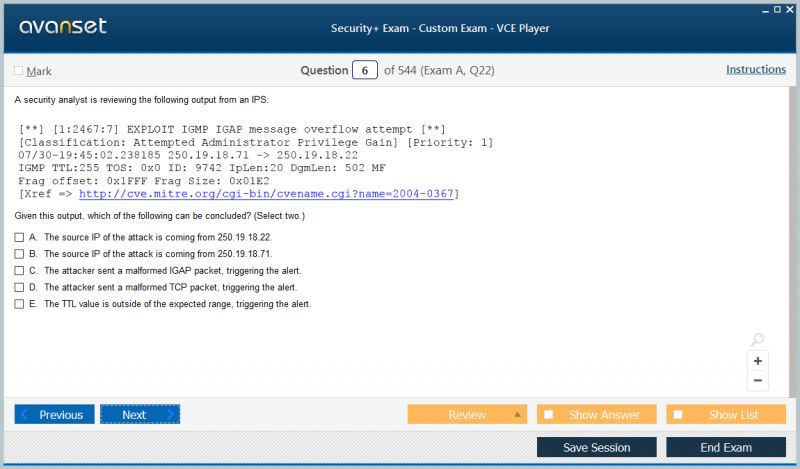
When playing a contact sport like lacrosse, padding and protection are essential. Look for lacrosse socks made from thick, cushioned materials that shield feet from impact and abrasion. Thicker socks absorb shock, preventing post-game bruising and pain.
Lacrosse involves nearly constant motion, quick cuts, and stops and starts. All this high-intensity movement places substantial force on feet over 60 minutes of play. Thin socks provide minimal barrier from cleats and turf abrasion, leading to painful blisters and loss of skin. Heavier padded socks add an extra protective layer, reducing irritation over bony areas like ankles and insteps.
Thick lacrosse socks also cushion feet from the constant pounding. Rapid acceleration and deceleration jars joints, tendons, and ligaments with each step. Extra sock padding acts as a shock absorber, dampening some of this damaging force before it reaches feet. More cushioning means less residual ache and swelling after intense games.
In addition, thick lacrosse socks prevent painful lace bite from cleats digging into the top of feet. Unpadded, thin socks allow cleat pressure to transfer directly to the skin, causing bruises and abrasions. Heavily padded socks create a soft barrier between cleats and feet, absorbing pressure before it becomes uncomfortable.
Cushioned socks also prevent development of calluses and blisters over pressure points like heels, toes, and balls of feet. Thin minimalist socks expose these high-friction areas to rubbing inside shoes. Extra padding reduces this friction, keeping vulnerable areas protected.
For the best blend of cushioning and performance, look for synthetic padded socks with mesh ventilation zones. Solid thick cotton socks lack breathability leading to overheated feet. Synthetics with mesh offer impact protection with moisture-wicking comfort.
Slipping on a pair of thick, padded lacrosse socks before each game and practice helps feet go the distance in comfort. Proper cushioning is a simple way to prevent injuries and keep foot pain off players’ radar.
Compression Lacrosse Socks Enhance Circulation and Stamina
In contrast, moisture-wicking lacrosse socks made from materials like polyester and nylon offer superior benefits:
- Efficient sweat management: These fabrics draw perspiration away from the skin, keeping feet dry throughout the game.
- Odor prevention: By remaining relatively dry, these socks discourage bacterial growth and unpleasant odors.
- Temperature regulation: Many high-performance socks include mesh ventilation zones that promote airflow, helping to cool the feet and prevent overheating.
Are all moisture-wicking socks created equal? While most synthetic socks offer some degree of moisture management, premium options often incorporate additional features. For instance, some high-end lacrosse socks feature anti-microbial treatments woven directly into the fabric. These treatments, often utilizing silver ions, provide long-lasting protection against odor-causing bacteria, even after multiple washes.
Ankle and Achilles Support: Stabilizing Your Game from the Ground Up
The dynamic nature of lacrosse puts significant strain on players’ ankles and Achilles tendons. Constant starting, stopping, cutting, and pivoting can lead to injuries if proper support isn’t provided. This is where specialized lacrosse socks come into play, offering targeted support to these crucial areas.

What features should you look for in supportive lacrosse socks?
- Compression zones: Many high-quality lacrosse socks incorporate graduated compression around the ankle and lower calf. This gentle pressure improves blood circulation, reduces inflammation, and provides a sense of stability during quick movements.
- Reinforced ankle construction: Look for socks with extra material or specialized knitting patterns around the ankle to help prevent rolling or twisting.
- Padded ankle collars: Thicker cushioning in this area protects against abrasion and lace bite from cleats.
- Heel guards: A reinforced or double-layered heel section helps prevent Achilles tendon irritation and keeps the foot securely in place.
- Arch support: Built-in arch bands provide stability, improve foot mechanics, and can enhance acceleration and speed on the field.
How does proper ankle and Achilles support translate to on-field performance? By providing stability and reducing the risk of sprains and strains, these features allow players to move with confidence. This can lead to more aggressive cuts, faster dodges, and sustained hustle throughout the game.

The Power of Cushioning: Comfort Meets Protection in Lacrosse Socks
Lacrosse is a high-impact sport, and the feet bear the brunt of this constant motion. Thick, padded lacrosse socks offer a crucial layer of protection and comfort that can significantly enhance a player’s endurance and performance.
What are the benefits of opting for cushioned lacrosse socks?
- Shock absorption: Thicker socks help dissipate the force of impact during running, jumping, and quick direction changes.
- Blister prevention: Extra padding reduces friction between the foot and shoe, minimizing the risk of painful blisters.
- Comfort during extended play: Cushioning helps maintain comfort throughout long practices and intense games.
- Protection from equipment: Padded socks provide an additional barrier against potential irritation from cleats and shin guards.
Where should cushioning be focused in lacrosse socks? While overall thickness is beneficial, strategic padding in key areas can offer targeted protection:
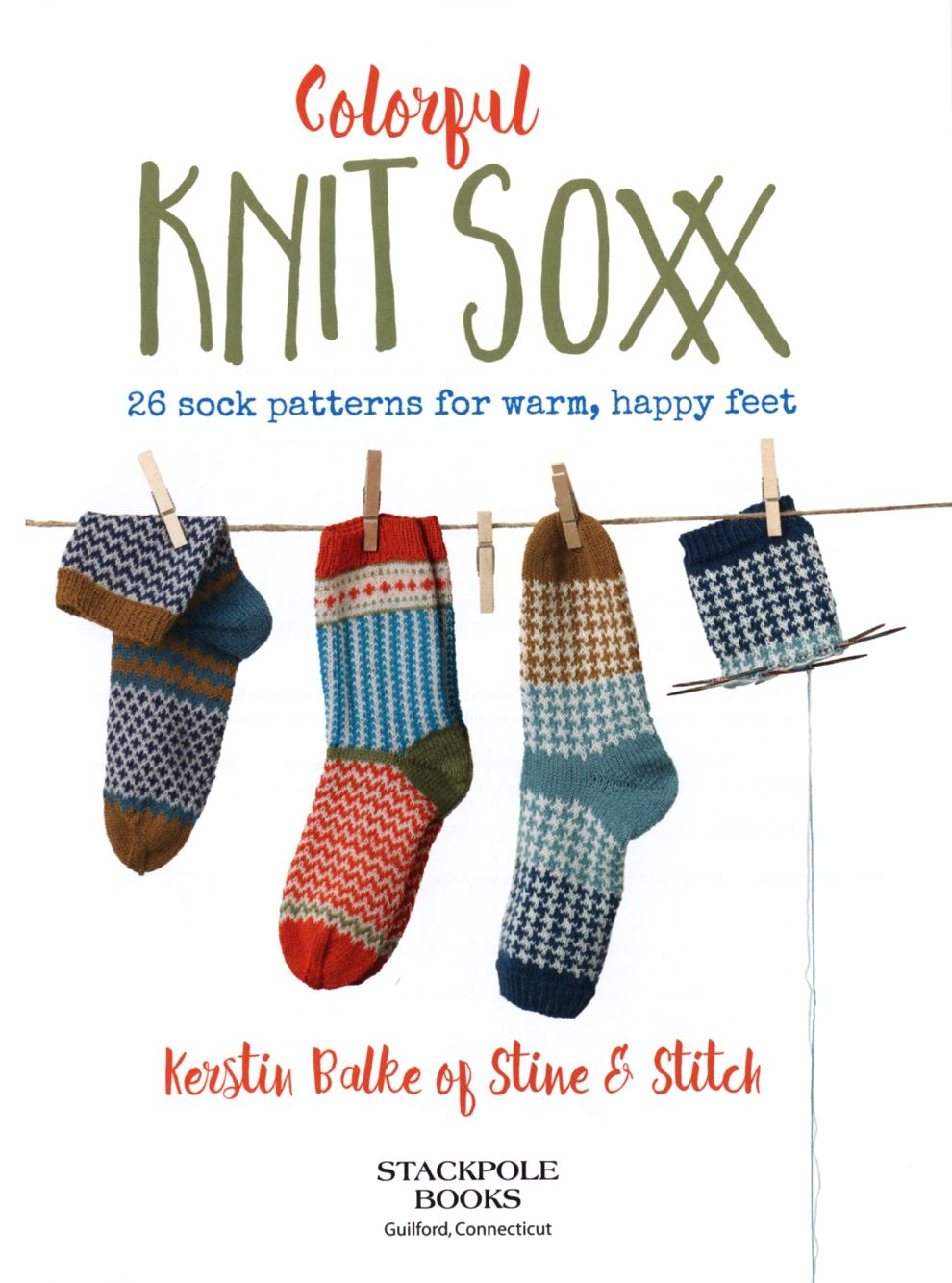
- Ball of the foot: This area bears significant weight and benefits from extra cushioning.
- Heel: Padding here helps absorb the shock of heel strikes during running.
- Toes: Cushioning in the toe box can prevent bruising and discomfort from sudden stops.
- Ankle collar: As mentioned earlier, padding in this area protects against abrasion from shoes and equipment.
Is it possible to have too much cushioning? While comfort is important, excessively thick socks may compromise the fit of cleats or reduce a player’s feel for the ground. The key is to find a balance between protection and performance that suits individual preferences and playing style.
Compression Technology: Boosting Performance and Recovery in Lacrosse
Compression has become a buzzword in sports apparel, and for good reason. When applied to lacrosse socks, compression technology offers a range of benefits that can enhance both on-field performance and post-game recovery.
How does compression work in lacrosse socks? These socks feature graduated pressure, with the highest compression at the ankle and decreasing as it moves up the calf. This design helps promote blood flow and reduce swelling.

What advantages do compression lacrosse socks offer players?
- Improved circulation: Enhanced blood flow can lead to better oxygenation of muscles, potentially improving endurance.
- Reduced muscle fatigue: Compression may help minimize muscle vibration during activity, reducing fatigue.
- Faster recovery: By promoting blood flow, compression socks can aid in the removal of lactic acid and other metabolic waste products after intense play.
- Stability and proprioception: The snug fit of compression socks can enhance a player’s sense of foot position, potentially improving agility and balance.
Are compression socks suitable for all lacrosse players? While many athletes benefit from compression technology, it’s important to choose the right level of pressure. Socks that are too tight can be uncomfortable and potentially restrict movement. It’s advisable to start with moderate compression and adjust based on personal preference and comfort.
Antimicrobial Properties: Keeping Lacrosse Socks Fresh and Hygienic
In the intense world of lacrosse, where sweat and physical exertion are constants, maintaining foot hygiene is crucial. Antimicrobial lacrosse socks offer an extra layer of protection against odor-causing bacteria and fungi.

How do antimicrobial treatments work in lacrosse socks? Many high-performance socks incorporate silver ions or other antimicrobial agents directly into the fabric. These substances disrupt the growth and reproduction of microorganisms, helping to keep feet fresher for longer.
What are the key benefits of choosing lacrosse socks with antimicrobial properties?
- Odor control: By inhibiting bacterial growth, these socks help prevent the development of unpleasant foot odors.
- Extended freshness: Antimicrobial socks tend to stay fresher for longer, even after multiple uses.
- Reduced risk of fungal infections: The antimicrobial properties can help protect against common foot conditions like athlete’s foot.
- Improved sock longevity: By preventing the buildup of odor-causing bacteria, these socks may maintain their quality for longer.
Is it necessary to re-apply antimicrobial treatments to lacrosse socks? High-quality antimicrobial socks are designed to retain their protective properties through multiple washes. However, it’s important to follow care instructions to maintain effectiveness over time.
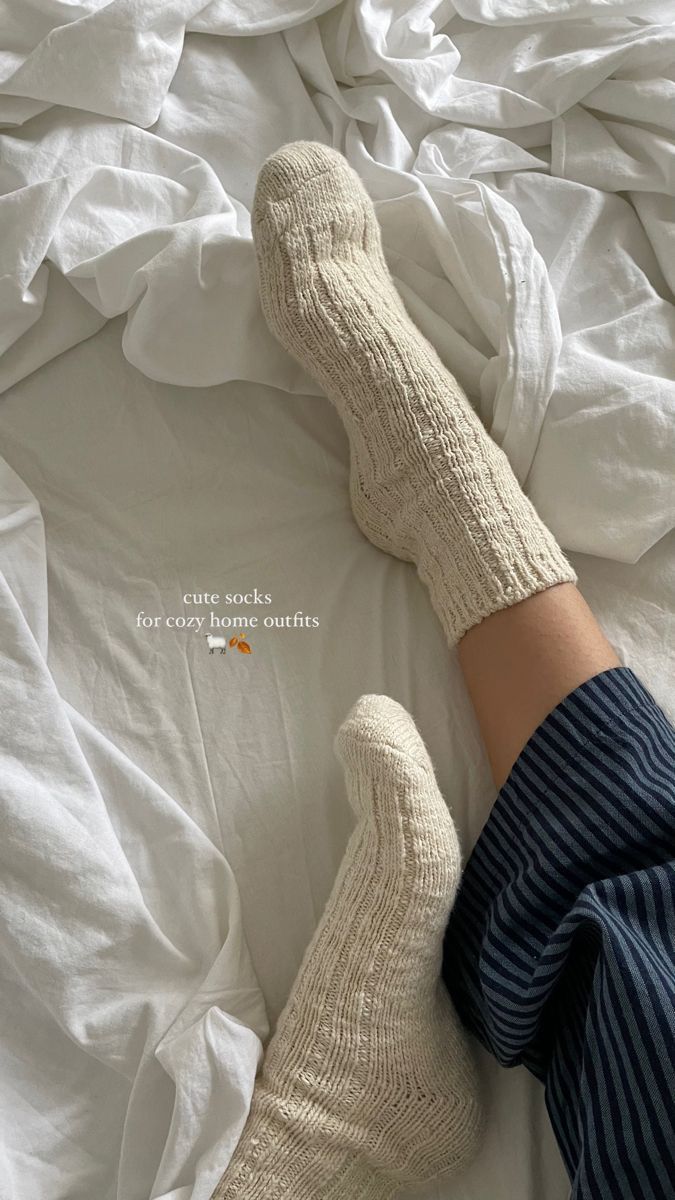
Ventilation Zones: Enhancing Breathability in Lacrosse Socks
Proper airflow is essential for maintaining comfortable, dry feet during intense lacrosse play. Many advanced lacrosse socks now incorporate strategically placed ventilation zones to enhance breathability and temperature regulation.
How do ventilation zones in lacrosse socks work? These areas typically feature mesh or thinner knit patterns that allow for increased air circulation. Common locations for ventilation zones include the top of the foot, around the ankle, and along the sides of the sock.
What benefits do well-ventilated lacrosse socks offer players?
- Enhanced moisture management: Increased airflow helps evaporate sweat more quickly, working in tandem with moisture-wicking properties.
- Temperature regulation: Better ventilation helps keep feet cool, reducing the risk of overheating and heat-related discomfort.
- Reduced blister risk: By keeping feet drier, ventilated socks can help prevent the friction that leads to blisters.
- Improved overall comfort: The combination of breathability and moisture control contributes to a more comfortable playing experience.
How should players balance ventilation with other sock features? While breathability is important, it’s crucial to ensure that ventilation zones don’t compromise the sock’s structural integrity or supportive features. Look for socks that strategically place mesh panels without sacrificing cushioning or compression in key areas.

Position-Specific Considerations: Tailoring Lacrosse Sock Choice to Your Role
Different positions in lacrosse place unique demands on players’ feet and legs. Choosing socks that cater to these specific needs can provide a competitive edge and enhance overall comfort during play.
What factors should players consider when selecting position-specific lacrosse socks?
Attackmen and Midfielders
These positions require quick acceleration, frequent direction changes, and sustained running. Key sock features to consider include:
- High ankle support to prevent rolling during quick cuts
- Extra cushioning in the forefoot for explosive starts
- Moisture-wicking properties to manage sweat during constant motion
Defenders
Defensive players need stability and protection for physical play. Beneficial sock features include:
- Reinforced shin area to withstand checks and collisions
- Strong arch support for a solid defensive stance
- Compression in the calf to aid in quick backpedaling
Goalies
Lacrosse goalkeepers require unique sock attributes to support their specialized role:

- Extra padding in the toe box for quick lateral movements
- Ankle stability features to support sudden direction changes
- Ventilation zones to manage heat during long periods of standing
How important is it to choose position-specific socks? While many high-quality lacrosse socks offer versatile features suitable for all positions, players who want to optimize their gear may benefit from socks tailored to their on-field role. Experimenting with different styles can help identify the most comfortable and effective option for individual playing styles.
As we’ve explored, choosing the right lacrosse socks involves considering a range of factors, from moisture management and support to cushioning and position-specific needs. By selecting socks that address these key areas, players can ensure their feet are well-equipped to handle the demands of this dynamic sport. Remember, the best lacrosse socks are those that allow you to focus on your game, not your feet.
Choose Moisture-Wicking Lacrosse Socks For Optimal Performance
When selecting lacrosse socks, moisture-wicking materials like polyester and nylon should be top of mind. The intense running and constant movement in lacrosse leads to copious sweating, especially on hot game days. Cotton socks absorb moisture and stay wet, creating discomfort and blisters. Polyester and nylon lacrosse socks instead wick perspiration away from the skin, keeping feet dry and comfortable. This allows players to maintain focus on the field, rather than being distracted by damp, bunching socks.
Moisture-wicking socks also prevent odor buildup and bacterial growth by remaining relatively dry. Wet cotton socks retain sweat and bacteria, becoming smelly and unsanitary over time. Breathable synthetic lacrosse socks discourage bacterial growth and odors by whisking moisture to the outer layer where it can evaporate. This keeps feet fresh for longer.
Some high-end moisture-wicking lacrosse socks even incorporate anti-microbial treatments into the fabric itself. This provides lasting protection against odors, even after repeat uses and washes. Silver ions bind to bacteria cells, rupturing cell membranes and deactivating the bacteria. This prevents the bacteria from reproducing and spreading foot odor.
When playing intense sports like lacrosse, overheating is also a concern. Heat rash and blisters can quickly take players out of commission. Moisture-wicking socks contain mesh ventilation zones that allow air flow over the feet. This airflow cools the skin and regulates temperature, preventing painful overheating issues.
So when suiting up for game days, practices, and training sessions, reach for moisture-wicking polyester and nylon lacrosse socks. They’ll keep feet dry, cool and odor-free – allowing players to bring their A-game from start to finish. Synthetic lacrosse socks are a small but impactful gear choice that can elevate on-field performance.
Pick Lacrosse Socks with Ankle and Achilles Support

When shopping for lacrosse socks, opt for pairs with ankle and Achilles support built in. The constant starting, stopping, cutting, and pivoting involved in lacrosse places intense strain on ankles and the Achilles tendon. Choosing socks with arch support and reinforced ankle construction helps stabilize ankles and prevent rolling or twisting. This protects players from painful ankle sprains and other injuries that can sideline them from the game.
Many lacrosse sock brands now incorporate compression zones around the ankle and below the calf. This gentle, graduated compression improves circulation and reduces inflammation. Better blood flow decreases recovery time after hard practices and games. Tight compression also provides a feeling of support and stability when making quick lateral movements and dodges on the field. Less ankle fatigue means players can go all-out for four full quarters.
Some lacrosse socks feature thicker cushioning pads around the ankle collar as well. This plush padding protects protruding ankle bones from abrasion and shock. Thicker padding also prevents lace bite from cleats digging into ankles. Padded ankle bands ensure ankles remain irritation-free and comfortable all game long.
When shopping for socks, examine the Achilles heel region as well. A reinforced or double-layered heel guard prevents irritation of the Achilles tendon. Friction from shoes and cleats can cause Achilles tendonitis over time, which is extremely painful. Heel support helps lock the foot in place, while preventing up-and-down movement that strains the tendon. This reduces injury risk to this vulnerable area.
Lastly, arch support in socks provides stability and shock absorption. The arch collapses with every step while running, placing substantial impact on feet. A molded arch band keeps the arch lifted in its proper position forsmoother foot mechanics. This leads to greater acceleration and speed, while also decreasing residual soreness. Targeted arch support also prevents the sock from sliding down the leg during play.
So when selecting your game day lacrosse socks, look for supportive features like ankle compression, heel reinforcement, and arch support. Properly stabilized feet lead to quick cuts, fast dodges, and all-out hustle from opening whistle to final buzzer.
Thick Padded Lacrosse Socks for Cushioning and Comfort

When playing a contact sport like lacrosse, padding and protection are essential. Look for lacrosse socks made from thick, cushioned materials that shield feet from impact and abrasion. Thicker socks absorb shock, preventing post-game bruising and pain.
Lacrosse involves nearly constant motion, quick cuts, and stops and starts. All this high-intensity movement places substantial force on feet over 60 minutes of play. Thin socks provide minimal barrier from cleats and turf abrasion, leading to painful blisters and loss of skin. Heavier padded socks add an extra protective layer, reducing irritation over bony areas like ankles and insteps.
Thick lacrosse socks also cushion feet from the constant pounding. Rapid acceleration and deceleration jars joints, tendons, and ligaments with each step. Extra sock padding acts as a shock absorber, dampening some of this damaging force before it reaches feet. More cushioning means less residual ache and swelling after intense games.
In addition, thick lacrosse socks prevent painful lace bite from cleats digging into the top of feet. Unpadded, thin socks allow cleat pressure to transfer directly to the skin, causing bruises and abrasions. Heavily padded socks create a soft barrier between cleats and feet, absorbing pressure before it becomes uncomfortable.
Cushioned socks also prevent development of calluses and blisters over pressure points like heels, toes, and balls of feet. Thin minimalist socks expose these high-friction areas to rubbing inside shoes. Extra padding reduces this friction, keeping vulnerable areas protected.
For the best blend of cushioning and performance, look for synthetic padded socks with mesh ventilation zones. Solid thick cotton socks lack breathability leading to overheated feet. Synthetics with mesh offer impact protection with moisture-wicking comfort.
Slipping on a pair of thick, padded lacrosse socks before each game and practice helps feet go the distance in comfort. Proper cushioning is a simple way to prevent injuries and keep foot pain off players’ radar.
Compression Lacrosse Socks Enhance Circulation and Stamina
Compression technology has evolved socks beyond just shielding feet. When shopping for lacrosse socks, consider compression options to enhance circulation and boost stamina. Compression socks support muscles, improve blood flow, and speed recovery.
Lacrosse demands nonstop motion including running, cutting, starting and stopping. All this movement overloads lower leg muscles and strains circulatory systems. Graduated compression socks apply gentle pressure from the toes up the calf to help mildly fatigued muscles recover.
The increased pressure improves circulation by pumping blood through veins back to the heart faster. Greater blood flow provides active muscles the oxygen and nutrients they need to perform at peak levels for longer. This allows lacrosse players to maintain speed and stamina even in later quarters of games.
In addition, improved circulation decreases lactic acid buildup and flushes exercise-induced waste products from muscles. This reduces muscle fatigue, cramping, and next-day soreness. Compression also stabilizes muscles, holding them tightly in place during intense activity.
Some brands offer full medical-grade compression socks requiring a prescription, while others provide light compression ideal for athletics. Mild 10-15mmHg athletic compression suffices for most lacrosse players. This provides support and stability without overly constricting circulation.
Compression socks also facilitate post-game recovery. Enhanced circulation delivers nutrients for muscle repair while removing inflammatory waste products. This speeds healing, getting players’ legs fresh and ready for the next matchup.
Lacrosse challenges cardio endurance and muscles to the max. Adding compression lacrosse socks enhances stamina for going the distance game after game. Improved performance and quicker recovery give lacrosse athletes an edge over the competition.
Customize Lacrosse Socks with Cool Designs and Colors
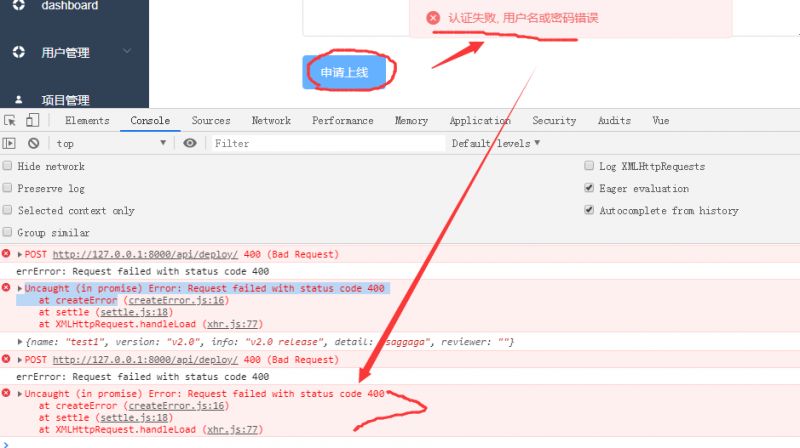
Beyond fit and function, lacrosse socks provide an opportunity to showcase personal style and team spirit. Bold colors and fun designs let players put their own stamp on required gear.
Today’s lacrosse socks come in every color imaginable from bright neon hues to classic athletic staples like black, white, and navy. Mix and match sock colors to complement or contrast uniform colors. Or opt for socks featuring color gradients, color-blocking, stripes and patterns for extra style.
Lacrosse socks also offer ample real estate to show off team logos, mascots, numbers and names. Many brands allow full customization with direct-to-garment printing for a unique sock design. This fosters team unity and pride on the field.
Choose creative designs featuring checkered patterns, polka dots, argyle and more. Lacrosse socks with jacquard knit textures and embossed logos elevate ordinary socks to make a bold fashion statement.
Let your personality shine through with lacrosse socks covered in lightning bolts, flamingos, pineapples and other fun graphics. Mix and match patterns on the same team for a playful, spirited vibe.
Beyond team customization, personalized socks also make great gifts among lacrosse club members, coaches and parents. Design custom socks featuring each player’s number, name, or even photo.
Lacrosse socks may seem like a purely functional piece of equipment. But their visibility on the field presents prime real estate for showcasing creativity and flair through color and design.
Size Lacrosse Socks Properly for Optimal Fit
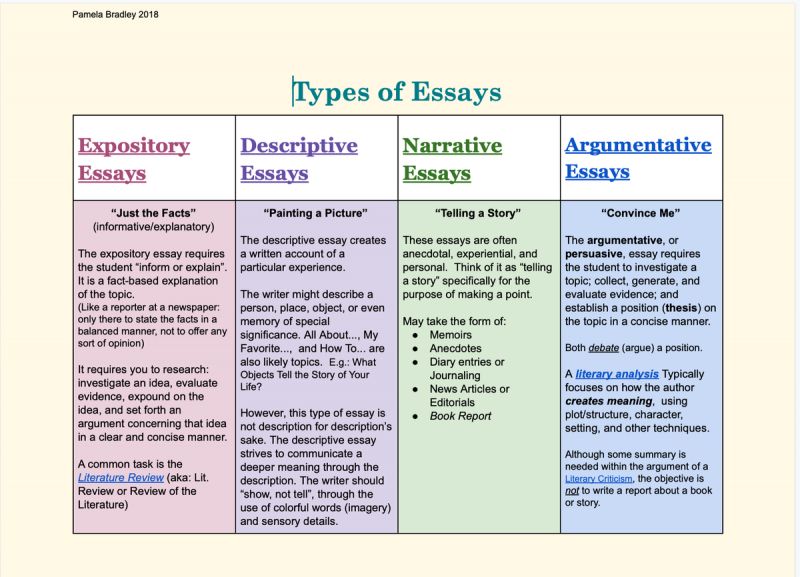
A common sock mistake players make is opting for a loose, baggy fit. When selecting lacrosse socks, follow sizing charts and choose a snug fit for optimal performance and comfort.
Oversized socks bunch up annoyingly around ankles and inside shoes, creating blister hot spots. Excess sock material also absorbs more sweat, compromising moisture wicking abilities. This leads to the squishy wet sock sensation that distracts from footwork.
Properly fitted lacrosse socks offer compression without constricting circulation. Snugness around the foot and ankle provides arch support and stability for changing directions. Tighter fit also allows moisture-wicking fabrics to work most effectively by remaining in close contact with the skin.
However, socks that are too tight can cut off circulation, especially during intense athletic activity. Make sure socks fit smoothly without digging into skin or leaving marks. If seams rub uncomfortably or elastic digs in, size up.
When trying on lacrosse socks, simulate game-like movements and foot flexion. Make sure there’s no pinching or restriction when pointing toes, flexing feet, and pivoting side-to-side.
Proper sock height is also critical. Length depends on player position and preference. Midfielders who cover a lot of ground generally prefer crew length for mid-calf support. Defensemen opt for ankle socks allowing ankle mobility. Goalies choose mid to knee-high lengths for extra padding.
Take time to experiment with different lacrosse sock styles and sizes to find your ideal fit. Properly fitted socks disappear on feet, keeping you focused on field play, not fussy footwear.
Choose Durable, Long Lasting Lacrosse Socks
When playing an aggressive contact sport like lacrosse, gear takes a beating. Look for lacrosse socks made from durable fabrics that maintain their integrity season after season.
Lacrosse involves constant motion including running, abrupt stops, and direction changes. This puts substantial stress on socks leading to stretched out cuffs, saggy legs, and threadbare heels. Flimsy socks rip easily, forcing players to replace socks frequently.
Premium lacrosse socks contain reinforced stitching and tightly woven technical fabrics resistant to ripping and tearing. Dense knit construction prevents socks from becoming baggy and misshapen with extended wear.
Some socks also incorporate Kevlar or carbon fiber threads for added strength. These virtually indestructible synthetic fibers reinforce high-stress areas prone to wearing thin. Kevlar and carbon fiber infused socks better withstand abrasion and retain their compression.
Examine the density of knit patterns when selecting lacrosse socks. Looser open knits with spacing between stitches deteriorate faster. Tightly knit fabrics with little spacing between yarns have greater durability and withstand repeated wearings and washings without pilling.
Inspect the exterior face fabric as well. Smooth wool, acrylic, nylon, and polyester blends resist snags and runs better than cotton. Synthetic technical fibers also wick moisture and retain shape over time unlike cotton which can become misshapen.
While upfront costs are higher, durably constructed lacrosse socks are a wise investment. Their longevity saves money by reducing need for frequent replacements. Durable socks also maintain compression and deliver consistent comfort game after game.
Breathable Lacrosse Socks Prevent Odor and Overheating

When playing intense sports like lacrosse, proper airflow prevents sweaty, smelly feet. Look for socks with breathable mesh zones that allow perspiration to evaporate and cool feet.
Lacrosse socks see copious sweating thanks to constant motion and exertion. Cotton socks absorb and retain moisture leading to bacterial buildup that causes odor. Cotton also lacks ventilation, trapping heat against feet.
Synthetic moisture-wicking socks with integrated mesh panels offer the best of both worlds. Polyester or nylon construction wicks sweat away from skin and into the outer sock layer. Strategically placed mesh zones then allow this moisture to evaporate rather than pooling inside the sock.
Mesh ventilation aligns with areas prone to heavy sweating like the top of the foot, above the heel, and behind the ankle. Open airflow in these spots cools feet and speeds moisture evaporation before wetness and odor set in.
Breathable socks also prevent overheating and irritated skin. Excess trapped moisture and heat cause painful blisters and fungal infections. But aerated socks maintain cool, dry feet ideal for performance.
Advanced socks may also incorporate antimicrobial silver fibers or treatments. Silver inhibits bacterial and fungal growth, preventing odors even after repeat wears. This allows socks to be worn multiple times between washes without smelling.
Breathable, moisture-wicking lacrosse socks keep feet comfortable for four sweaty quarters. Mesh ventilation is a must to avoid distracting wetness, irritation, and unpleasant aromas.
Cushioned Footbeds in Lacrosse Socks Absorb Impact

The constant stops, starts, cuts, and jumps in lacrosse deliver jarring impact to feet. Cushioned footbeds in lacrosse socks help absorb shock, preventing residual aches.
Feet endure up to 3-4 times your body weight in force with each step when running. Sudden changes in speed and direction in lacrosse intensify that pounding. Over time, the repetitive impact trauma can lead to bruising, stress fractures, plantar fasciitis, and other overuse injuries.
However, a plush cushioned footbed minimizes shock by diffusing impact before it reaches the feet. Foam or fleece padding under the foot absorbs some of the damaging force of constant foot strikes. This leaves feet and joints feeling fresh even after intense play.
Padded lacrosse socks also prevent lace bite and blisters. Cushioning creates a barrier between cleats and the delicate top of feet. Impact that would cause painful pressure and friction is dissipated before affecting comfort.
Underfoot padding aligns with pressure points prone to irritation like the heel, ball of the foot, and base of the toes. Extra cushioning protects these high-impact zones from trauma leading to calluses, blisters and lost skin.
For best shock absorption, look for variable cushioning density in socks. Thicker padding under pressure points with tapered cushioning through the arch area optimizes protection and comfort while minimizing bulk.
Slipping on cushioned lacrosse socks adds essential padding against the non-stop pummeling feet take. Padded footbeds reduce repetitive impact trauma, keeping feet fresh shift after shift.
Arch Band in Lacrosse Socks Prevents Slipping
Ill-fitting socks that slide and bunch up are a distraction no lacrosse player wants to deal with. A snug arch band keeps lacrosse socks firmly in place for fumble-free footwork.
The near-constant motion in lacrosse shifts socks around, leading to frustrating adjustment and fidgeting. Loose socks bunch around ankles and slide down calves, interfering with smooth play. An arched band underneath the foot solves this issue.
The arch band fits snugly against the high arch area, holding socks upright without constricting. The light compression helps improve circulation through the arch while locking socks in position. Even during intense lateral cuts and dodges, a reinforced arch band keeps socks from dropping down.
A molded supportive arch band also delivers subtle arch support for better foot mechanics. The arch is designed to absorb shock and spring back with each step. But overpronation causes the arch to over-collapse, resulting in misalignment and pain. A structured sock arch band helps maintain proper arch structure and positioning.
Arch support also helps stabilize feet for sharper cuts and pivots. When the arch loses integrity, it allows too much foot motion inside shoes. A reinforced arch region gives feet a solid base for quicker acceleration and surer stops.
An arch band integrated into lacrosse socks eliminates irritation and distraction over loose sliding socks. Keep socks locked in place and feet focused on the game with this simple yet effective sock feature.
Reinforced Heels and Toes Increase Lacrosse Sock Durability

The heels and toes of socks endure the most abuse, especially in aggressive sports like lacrosse. Targeted reinforcements protect high-wear areas from premature deterioration.
The combination of constant friction inside shoes and abrasion against turf and cleats causes socks to develop holes and wear thin in the heels and toes. Every cut, stop, and direction change grinds away at these high-impact zones. Weak heels and toes lead to embarrassing holes and cause socks to rip out entirely.
However, densely knit fabric reinforcements in the heels and toes resist abrasion damage. Added stitching and durable synthetic overlays provide a protective barrier over these vulnerable high-stress areas. Reinforcements structurally bolster the sock architecture to prevent early breakdown.
Some lacrosse socks feature quadruple layered heels for added durability and cushioning. The extra heel padding also grips heels securely to prevent painful friction and slipping that irritates the Achilles tendon.
Toe reinforcements shield toes from cleat pressure and friction which can lead to black nails and jamming injuries. Extra toe padding absorbs impact to keep toes comfortable when abrupt stops jam feet into the fronts of cleats.
While no gear lasts forever, focused heel and toe reinforcements extend the lifespan of lacrosse socks. Preserving the heels and toes saves money otherwise spent replacing tattered socks after just a few games.
Non-Slip Lacrosse Socks Increase Traction and Stability

Unstable footing sabotages lacrosse performance. Non-slip socks with gripping soles create traction to prevent slips and loss of control.
Making quick cuts, stops, and directional changes requires firm footing. But smooth sock soles on slick turf can cause feet to slide around in cleats. This instability leads to loss of balance, awkward falls, and risk of ankle rolls and knee injuries.
Lacrosse socks with integrated grip pads, however, provide consistent traction. Silicone or rubber grippers on sock soles prevent sliding inside shoes. This keeps feet securely planted for surer stops and pivots without slippage.
Strategically placed grippers under the heel, arch, and forefoot give stability where it’s needed most. Heel grips keep feet locked in place for straight speed and starting power. Grips under the ball of the foot facilitate solid toe-offs and multi-directional lunges while arch grips deliver medial and lateral security.
Grippy socks also counteract sweat buildup. As moisture accumulates in shoes during games, feet naturally slide more freely. But socks with integrated traction maintain secure footing even when sweaty for safer maneuvers play after play.
On slick natural grass fields, dew and moisture further reduce traction. Non-slip socks provide extra insurance against slippery conditions threatening surefootedness and joint integrity.
Stay grounded and sure-footed in competition with non-slip lacrosse socks. Anti-slide feet equate to greater stability, speed, and competitive edge.
Choose Lacrosse Sock Length Based on Position
Lacrosse sock height ranges from ankle to knee-high. Use playing position and personal preference to select the ideal length for performance and protection.
Ankle socks offer ultimate freedom of motion for quick cuts and multi-directional footwork. The lightweight feel keeps ankles nimble and fast, ideal for midfielder positions covering lots of ground. However, ankle socks leave ankles more vulnerable to abrasion.
Crew length lacrosse socks sit mid-calf, combining protection with mobility. The extra coverage defends calves from turf burn while the cut below the calf allows a full range of motion. Crew socks suit most field positions.
Knee high socks provide maximum coverage for goalies needing extra padding. Added cushioning across shins and calves protects the greatest impact zones from ball strikes. But the higher sock length can feel restrictive for active field players.
Consider preference as well – some players dislike the sensation of taller socks bunching behind the knee. Test different lengths to determine what feels best and avoids distractions.
Also account for the climate. In hot conditions, minimal ankle socks allow better airflow to cooler legs and prevent overheating. Colder weather demands longer socks to insulate lower legs from chill.
Mix and match sock lengths too. Wear a higher sock on one leg with added padding over a frequently bruised calf or shin for protection where it’s needed most.
Consider priorities like freedom of motion versus protection and cushioning when selecting ideal lacrosse sock height. Get the right fit for your position and needs.
Team Lacrosse Socks Showcase Spirit and Unity

Make a team statement by outfitting the squad in custom lacrosse socks. Matching socks foster team spirit and intimidate opponents.
Uniform socks embroidered with the team logo, mascot or name make a bold, coordinated statement. Custom socks strengthen team identity and exude an intimidating, uniform look.
Uniquely designed socks also showcase creativity and build program spirit. Fans in the stands can better identify and rally behind players wearing memorable team socks.
Matching socks build camaraderie between teammates. When the entire squad suits up in the same custom gear, players feel a stronger bond and responsibility to the team.
Coordinated socks also make coaching and substitutions easier. Coaches can clearly identify starting players versus reserves by sock design. And players coming off the bench or going in for substitutions can be identified more readily.
Let your team make a statement. Bold, matching socks present a powerful, cohesive image and make your program impossible to forget.
Beyond custom team socks, creativity is encouraged. Design socks showcasing each player’s number, name or fun graphics that reflect their personality.
With endless design options, socks provide a versatile canvas to display team creativity and spirit from the feet up.
Choose Quality Lacrosse Socks from Trusted Brands
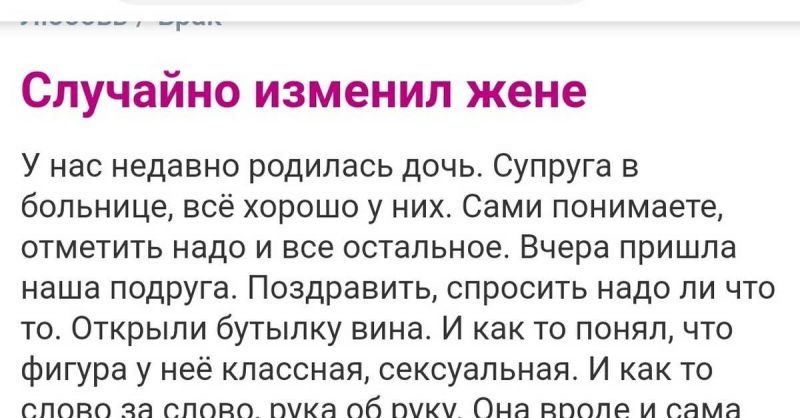
With so many athletic sock brands to choose from, quality matters. Seek out lacrosse socks from established companies with a reputation for performance and durability.
Well-known athletic brands devote extensive research and development towards engineering high performance socks. They utilize technical fabrics and performance features not found in basic socks.
Reputable lacrosse gear companies also understand the demands of the sport. They intentionally design socks to provide the support, protection, and durability the game requires.
Respected brands thoroughly test socks to ensure they deliver compression, fit, and ventilation as promised. Their socks maintain quality and construction over repeated wears and washes.
Customer reviews provide insight into real-world performance and longevity too. Quality lacrosse socks earn high marks for meeting player expectations across many seasons of use.
Established sock brands also tend to offer better variety. They produce socks in multiple heights, styles and colors to perfectly suit each player’s preference.
While more affordable, generic socks lack specialized engineering. Their limited performance features and inconsistent construction leave players disappointed.
For lacrosse socks you can count on game after game, turn to proven brands you know and trust. Quality engineering and construction ensure socks go the distance – just like you.